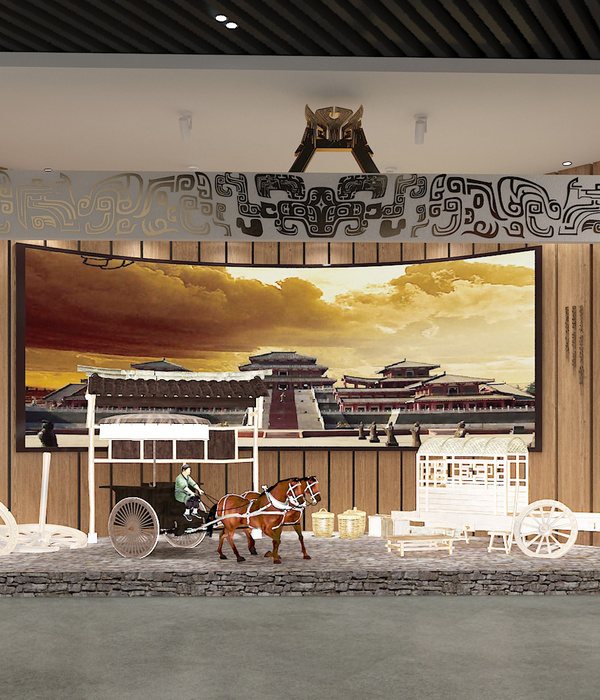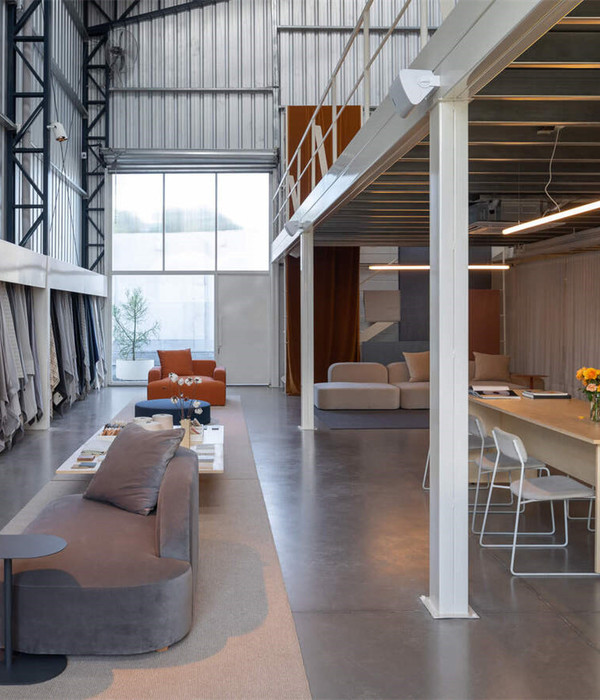‘The Human Touch: Making Art, Leaving Traces’ is a new, temporary exhibition at The Fitzwilliam Museum, Cambridge, with all exhibition and graphic design created by leading cultural sector specialists Nissen Richards Studio, working closely with the museum’s curators. The exhibition, which examines how the language of touch shapes and has shaped our existence, will run until August 1, 2021. In a separate commission, Nissen Richards Studio created a film to serve as both a trailer for and an introduction to the exhibition, exploring themes, filming key objects and adding additional content to link with the branding of the exhibition.
About The Fitzwilliam Museum:
The Fitzwilliam Museum is the lead partner of the spectacular collections of the University of Cambridge Museums (UCM) and Botanic Garden. The Fitzwilliam houses a world-renowned collection of over half a million beautiful works of art, masterpiece paintings and historical artefacts dating from antiquity to the present day. This is the first time Nissen Richards Studio has worked for The Fitzwilliam and all the team has hugely enjoyed the process.
‘We’re delighted to be working on this and getting to know these new galleries, Pippa Nissen, Director of Nissen Richards Studio commented. ‘The Fitzwilliam Museum team has been a delight to work with and we have forged a strong creative partnership through the course of design exploration and planning, in spite of a challenging run-up during lockdown. This has also, however, added unexpected extra potency and even poignancy to the theme of ‘touch’.’
The Human Touch: Overview
‘The Human Touch: Making Art, Leaving Traces’ draws on works of art spanning four thousand years from across the globe and explores the fundamental role of touch in human experience. The exhibition’s scope ranges from anatomy and the skin to the relationship between the brain, hand and creativity. It also looks at touch in relation to desire and possession, politics and ideology, reverence and iconoclasm. The final section brings together a series of reflections on touch, both historic and contemporary.
Objects within the exhibition range from ancient Egyptian limestone sculpture to medieval manuscripts and panel paintings - and from devotional and spiritual objects to love tokens and faith rings from all over the world. Drawings, paintings, prints and sculptures by Raphael, Michelangelo, Rembrandt, Carracci, Hogarth, Turner, Rodin, Degas, and Kollwitz are re-analysed and seen alongside work by contemporary artists such as Judy Chicago, Frank Auerbach, Richard Long, the Chapman Brothers, Richard Rawlins, Donald Rodney and others.
Although the exhibition was planned long before the Covid-19 crisis, its timing and relevance to what people have lived through is particularly pertinent.
‘The events of 2020 have made us newly alive to the preciousness and the dangers of touch, making this exploration of our most fundamental sense particularly timely and resonant’, a spokesperson from The Fitzwilliam Museum commented.
The incredible scope of human touch is examined in many ways in the exhibition. Touch is our first human sense, for example. It develops in the womb as our brain first springs into life, even before our ears and eyes have formed. The earliest traces of human creativity are the direct imprint of touch, grooves made by fingers or prints made by the whole hand. Through touch we make art, stake a claim to what we own and those we love, express our faith, our belief, our anger. The language of touch shapes our existence. We are touched by emotion, stay in touch across vast distances and lose touch when a social bond is broken. When physical distancing is imposed on us, our sense of emotional connection feels threatened.
David Evans, Exhibitions Manager at the Fitzwilliam Museum added, ‘We are radically happy at the experience of working with Nissen Richards Studio on The Human Touch. The project has grown and evolved in the extra planning time allowed by the national lockdown. Nissen Richards Studio continued to work with us on the journey through the lockdown and delays to the exhibition, expanding the curatorial content in order to respond to global changes. This focused the exhibition design and enabled us to look more closely than ever at the art works on show. The gallery space now captures our sense of touch through all the senses. The film accompanying the exhibition was our opportunity to engage emotionally with the exhibition content in ways we hadn't managed before, enjoying the art works in forensic detail. We are happy too to be planning future exhibitions with Nissen Richards Studio’.
Design Approach:
The design of the exhibition uses texture, light and shadow to create an immersive and emotive journey for visitors that amplifies the power of the objects and art on show and underlines their narrative. A sense of tactility and craft formed part of the exhibition’s structural design for it to be more narrative and integral. There is a strong relationship between the graphics and the 3D forms to help achieve a full sensory and immersive journey for the visitor and underline links with the prints and gestures of the artists whose works are on show.
Exhibition structures are made up of freestanding curved walls, organic and fluid shapes which suggest cupped hands that hold the information and displays. The walls were designed to bear the signs of their maker and feature hand-applied plaster to the outside. Graphic info panels, meanwhile, feature a tactile and textured crinkled surface, created using thin, uncoated paper usually used for newspapers, which, when applied using paste, replicates the texture of skin. The introductory film for the exhibition was created by Nissen Richards Studio working with Director of Photography Pete Bateson, to explore the theme of touch and create a sense of tactility.
‘We really enjoyed working with film as an extension of our graphics work’ Pippa Nissen commented. ‘The film shows how the objects were made in order to stimulate a connection with the artists. August Rodin’s hand, for example, shows details of his thumb prints and marks and helps us understand the techniques used by the artists in the works on display.’
Exhibition Walk-through:
The exhibition is located in two large rooms on the museum’s first floor and is organised into eight sequential sections: Immersive Opening This area introduces and immerses visitors into the theme.
Anatomy of Touch Our bodies are enveloped by the organ of touch, the skin. Touch receptors connected to our nervous system are everywhere, but most densely clustered in our fingertips, allowing us to read tactile writing systems like Braille, whilst our fingerprints, fully formed at birth, are unique to each individual. This section looks at our hands as instruments of astonishing complexity, looking at how dissection revealed their wondrous anatomy with a design so remarkable it was considered evidence of the existence of the creator. Artists explore both the complexity of the hand and the sensitivity of skin, telling its painful histories, both personal and political.
Hands at Work This section of the exhibition considers the capabilities of touch, from delicacy to strength, looking at artists and makers who depend on the full range of the hand’s capacities, including strength, flexibility, delicacy. For some artists, hands are an alternative self-portrait, a statement of intent more telling and more expressive than the face, whilst makers can use the hand more directly still, in the form of fingerprints or an incising nail, or more indirectly, using instruments the human hand is uniquely equipped to manipulate – brushes, knives, pens.
Taking Hold
This section looks at touch as a way to connect, but also to mark territory and signal our presence to others. Whilst tactile interactions are crucial for healthy development in children, comforting and creating lasting bonds, touch can also be experienced negatively and be inappropriate. This section spells out the necessity of touch, but also the need for consent and limits to its boundaries.
Power of Touch
The fifth section of the exhibition investigates the hand as an interface between the material and spiritual worlds. Tracing the lines of character and fate in the palm of the hand is for some a key to the soul, whilst rituals of touch can release the healing powers of the spirits, and hands and their touch can help us navigate death, in mourning, or in mythology. In the Christian story of the resurrection of Jesus, the human need to touch is laid bare in his encounters with Mary Magdalene and Doubting Thomas. When belief falters, touch can convince.
Revere / Destroy
In the penultimate section, the show looks at how acts of reverence and of protest often depend on touch. Our emotions are revealed in our gestures and how we treat the objects around us. Devotional actions require considered, solemn gentleness, from Buddhist spiritual practice to prayer beads, but actions motivated by anger or hatred involve injurious brute force. We obliterate, strike, scratch, and deface to make plain our dislike, and leave traces for others to see.
The Power is in Your Hands
The splayed hand, the clenched fist; political movements often deploy the symbolic power of the hand. Its image evokes protest and the refusal to submit, conveys agency and the desire for self-determination. Bound or shackled hands signal enslavement and de-humanisation. The extended hand supports those in need, reaches out across divisions, and seals the bond between individuals, communities, and nations.
Immersive Close This final section looks at the psychology of touch and making a mark or leaving a trace.
{{item.text_origin}}












